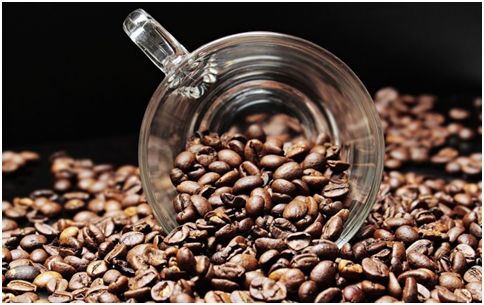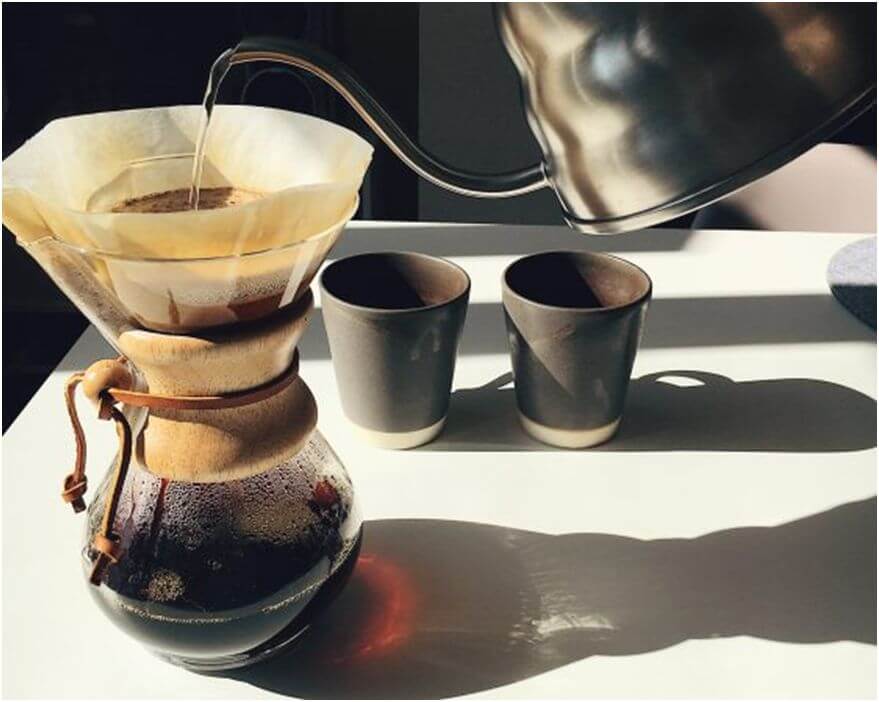Coffee makes an excellent companion – when you are with your friends or spending some alone time with a book or watching a movie or enjoying that rain out of your window, getting ready to attend a meeting and looking for a quick boost of energy and many such moments.
The flavor, the energy kick and the aroma of the joe are unbeatable. This is an accepted fact by all the coffee lovers across the globe. Science, too, has confirmed immense health benefits of black coffee when consumed in moderation, making a cup of joe a good choice to protect our health too.
However, the trick lies in brewing the coffee – the coffee bean types, the temperature of the water, the roasting style, the temperature of the drink when you consume and other factors.
In this article, let us demystify 7 buzzs that will change the way you brew coffee at home.
1. The coffee bean

The quality of the coffee bean would obviously top the list. Because this is what comprises the essence of the coffee. There are some factors that you have to remember before you choose your coffee bean:
The Type:
In general, four coffee bean types are widely in use:
- Arabica (Coffea arabica): They are bright, contain exact levels of acidity and have an intricate flavor and aroma. Best served hot, the coffee made of these beans tastes better when brewed using drip coffee technique.
- Robusta (Coffea caniphora): They contain double the caffeine content than Arabica ones. These beans make excellent coffee when served along with milk and sugar.
- Liberica (Coffea liberica): They are irregular in shape and look asymmetrical than any other coffee bean. The brew of these beans is smoky in flavor.
- Excelsa (Coffea excels): Mostly grown in Asia, they are known for their taste that impacts the back palate. They are rich in color and have a dense flavor.
Ground or Bean:
Either you want to go for coffee grounds direct from the store or buy beans and grind them at home, you should keep in mind the following essentials:
- Never buy coffee grounds that do not mention the origin of coffee bean or the moth of their manufacture.
- It is better to finish off a coffee powder packet in two weeks or maximum in a month after its opening.
- Always buy a fresh stock of ground coffee, as coffee has its peak flavor only for around a couple of days once it is grounded.
- Do not buy coffee beans in bulk, as they lose their strength over time.
2. The roasting style
When it comes to roasting style, two terms are most oft-heard: light roasting and dark roasting.
Light roast: As the name says, the coffee beans are lightly roasted; which means they don’t spend much time on the roasting machine, resulting in lesser loss of moisture from the beans and hence stronger flavor. Stating simply, light roast gives more caffeine.
Dark roast: Contrary to the light roast, the beans in this method spend a lot of time on the roasting machine and are roasted for longer. Sometimes, the roasting temperature is also higher compared to a light roast one. You get drier bean at the end, and the resulting powder will have lesser caffeine content too.
3. The water for a perfect brew
Here’s lies another trick in attaining a perfect brew. In general, we get two types of water – tap water which is hard and full of minerals, and soft water that is soft and suitable for drinking.

When you use hard water for brewing, the minerals in the water does not allow proper bonding of coffee grounds with water and may result in a poorly extracted brew. Using hard water may also cause settlements in your coffee maker and can make it tough to clean.
On the other hand, using filtered water may result in degradation of machine’s performance over time as the water will leech minerals from the metal components of the coffee maker since the water on its own does not have any dissolved ions.
Thus, to get that perfect brew, you have to use mineral water that is around 150ppm. You have another option too: you can use water from your water filter pitcher.
4. The storage technique
Coffee grounds are better stored in glass jars or mason jars, away from direct sunlight. Also, remember not to store coffee grounds in the refrigerator as the oil content may be affected due to the cooling of the fridge.
When storing coffee beans, use the bag that comes along with the beans, and store in a cool, dry and dark place away from moisture and sunlight.
5. Pre-infusing
Pre-infusing helps in the removal of carbon dioxide that might have been left over after the end of the roasting process. If you miss pre-infusing, you may obtain weaker brew at the end.
To pre-infuse:
- Place a filter into the hopper, and add the coffee grounds.
- Preheat a kettle with a half cup water to 200 degrees Fahrenheit and pour the water slowly onto the coffee grounds.
- Wait for a minute to allow the coffee to sit and then start your coffee maker.
6. Temperature of brewing
The ideal brew temperature for a cup of best-tasting coffee is between 195 and 205 degrees Fahrenheit. A tip here to test if the temperature is ideal or not, use a thermometer into the hopper when you add hot water. You can also boil your water in the kettle to ensure that you reach this ideal temperature for brewing.
Keep in mind that if you exceed 205 degrees, the chances of the burning of your coffee are pretty high.
7. The brewing technique
There are various methods of brewing with each resulting in slightly different flavor and strength of the resultant brew. Here we list some of the widely used brewing techniques:
The Espresso Machine
Here, water at very high pressure is forced onto the coffee grounds. This is a popularly used method and is often considered very comfortable owing to its use of usage and affordability. In around three minutes, your espresso machine gives you that cup of joe that you have been longing for!!

The SoftBrew
This method involves usage of a stainless steel filter where coffee powder is added on the top section of the filter and boiling water is poured on it slowly. The flavor of the coffee grounds seeps into the water and the brew is collected in the lower container of the filter.
Cold Drip Brewing
While most methods of brewing use hot water, the cold drip brewing involves pouring of water at room temperature onto the coffee grounds and allowing it to seep all the aroma and flavor of the coffee. Though it takes around 10 hours, followers of this method say that this method gives the strengthens coffee brew out of all the existing methods of brewing!
The Boil and Brew Method
You can do this with pretty ease! Boil the water, switch off the flame, throw in coffee grounds, wait for 10 minutes and filter the water to collect your brew! No equipment needed!!
So, are you ready to make your next cup of coffee more amazing now? Go ahead and please your taste buds even better!
Donna Jones is a copywriter and content writer who specializes in building online communities, email marketing campaigns, and sales pages. Donna focuses on helping people to understand how to better drive traffic, develop relationships and earn revenue online. Her writing skills may be confirmed independently American Heroes Coffee.